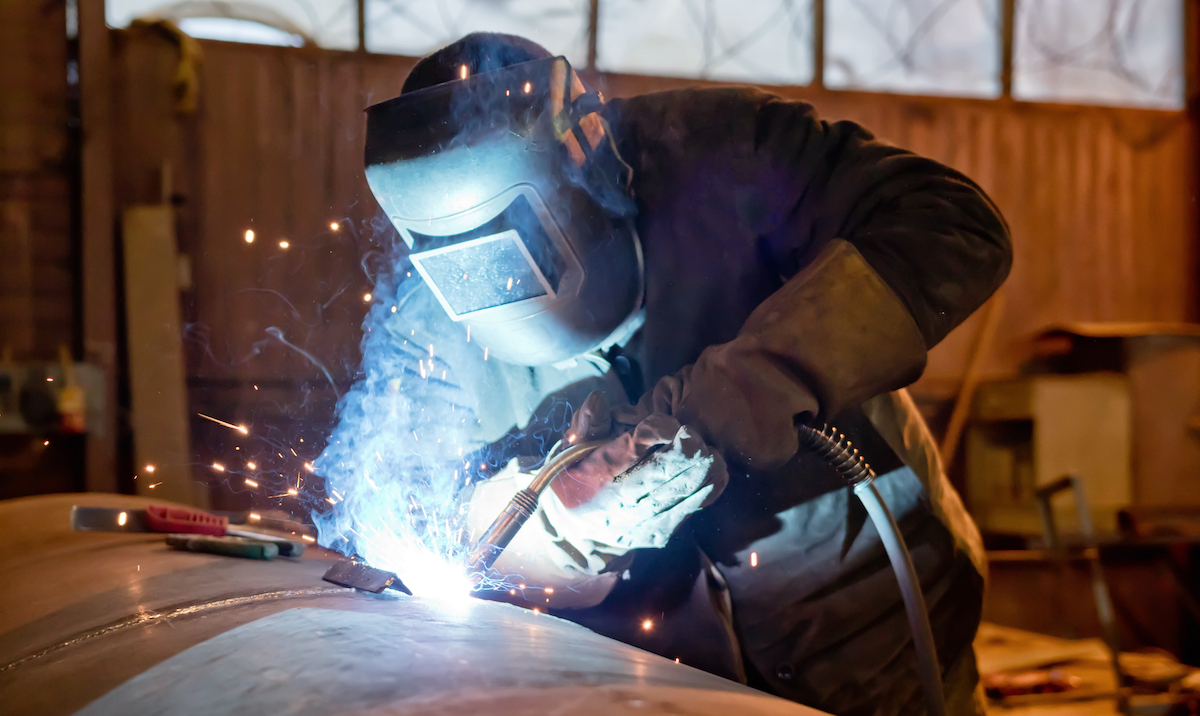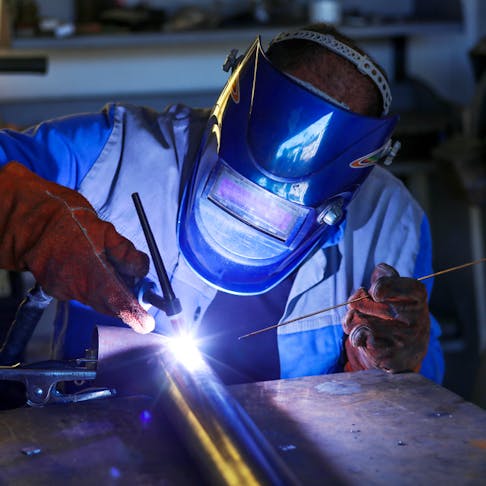Usual Welding Repair Work Issues and Exactly How to Address Them Effectively
Welding repair services typically experience an array of concerns that can endanger the honesty of the end product. Common troubles consist of inadequate infiltration, porosity, and misalignment, to name a few. Each flaw provides unique challenges that require particular approaches for resolution. Recognizing these issues is essential for welders intending to enhance their abilities and outcomes. This discussion will explore these usual welding repair service concerns and efficient approaches to resolve them.
Insufficient Infiltration
Poor penetration happens when the weld metal falls short to totally fuse with the base product, causing weak joints and prospective structural failures. This issue often originates from inadequate warm input, wrong electrode angle, or incorrect welding rate. Welders may run into insufficient penetration as a result of a mistake of the required criteria for a specific material thickness or type. Furthermore, contamination on the base material's surface area can prevent efficient bonding, exacerbating the trouble. To attend to poor penetration, welders ought to guarantee appropriate setups on their equipment and preserve a tidy job surface. Regular inspection of welds is suggested to recognize any deficiencies early, enabling timely improvements and the prevention of endangered structural stability in welded assemblies.
Porosity
Porosity is a common problem in welded joints that manifests as small gas bubbles caught within the weld metal. This issue can jeopardize the stability of the weld, bring about lowered toughness and possible failing under stress and anxiety. Montana Mobile Welding and Repair Belgrade. Porosity typically occurs from contamination, wetness, or improper welding strategies, which permit gases to escape into the liquified weld pool. To deal with porosity, welders need to ensure appropriate surface prep work, maintain a clean working setting, and use ideal welding parameters. In addition, choosing the best filler material and shielding gas can mitigate gas entrapment. Normal assessment and screening of welds can aid recognize porosity early, assuring prompt corrective activities are taken, therefore preserving the quality and dependability of the bonded structure
Misalignment
Imbalance in welding can occur from numerous aspects, consisting of incorrect arrangement and thermal growth. Comprehending the source is important for effective resolution. A number of modification techniques are offered to straighten components and assure structural stability.
Sources of Misalignment
Welding imbalance often comes from a range of underlying concerns that can compromise architectural stability. One primary cause is improper fit-up of elements prior to welding, which can cause gaps and unequal surface areas. Variations in thermal growth during the welding procedure can additionally result in distortion, specifically if the products being signed up with have various coefficients of expansion. Furthermore, insufficient clamping and fixturing may fail to hold parts firmly in place, causing movement during welding. Poorly kept equipment, consisting of welding equipments and devices, may present variances in the weld bead, additional adding to imbalance. Driver mistake, stemming from inadequate training or experience, can also play a substantial duty in creating misaligned welds.

Adjustment Techniques Offered
Addressing misalignment effectively needs a mix of rehabilitative techniques tailored to the specific problems handy. One usual technique is making use of jigs or components to hold components in the appropriate setting during welding, guaranteeing constant alignment. Furthermore, pre-heating the materials can help in reducing distortion and boost fit-up. For considerable imbalance, mechanical realignment strategies, such as making use of hydraulic jacks or clamps, can be utilized to fix the position prior to welding. Post-weld warm treatment might additionally be necessary to ease anxieties triggered by misalignment. Ultimately, mindful inspection and modification during the configuration phase can stop imbalance issues from becoming considerable troubles, advertising a smoother welding process and improving general architectural honesty.
Distortion
Distortion is a common difficulty in welding that can occur from different variables, consisting of unequal heating & cooling. Recognizing the reasons of distortion is necessary for carrying out effective avoidance methods. Resolving this issue not only enhances architectural integrity however likewise boosts the general high quality of the weld.
Reasons for Distortion
When subjected to the intense warm of welding, products commonly go through adjustments that can lead to distortion. This phenomenon largely arises from thermal growth and tightening during the welding process. As the weld location warms up, the material broadens; upon air conditioning, it acquires, which can develop inner tensions. On top of that, uneven heating across a work surface can intensify these stresses, resulting in bending or bending. The type of product likewise plays a significant function; steels with varying thermal conductivity and coefficients of development might react in different ways, leading to unpredictable distortions. Poor joint layout and insufficient fixturing can contribute to misalignment during welding, raising the likelihood of distortion. Understanding these causes is essential for effective welding repair work and avoidance techniques.
Prevention Techniques
Efficient avoidance techniques for distortion throughout welding concentrate on regulating heat input and guaranteeing proper joint design. Preserving a consistent heat input aids to reduce thermal expansion and tightening, which can result in distortion. Utilizing strategies such as pre-heating the workpiece can also lower the temperature slope, promoting consistent home heating. In addition, picking appropriate joint designs, such as T-joints or lap joints, can improve security and lower tension concentrations. Implementing proper fixturing to protect the workpieces in position additionally aids in maintaining positioning during the welding process. Lastly, staggered welding series can disperse heat extra evenly, stopping localized distortion. By using these techniques, welders can substantially lower the chance of distortion and enhance the general top quality of their welds.
Splitting
Splitting is an usual concern run into in welding repair work, typically resulting from numerous aspects such as inappropriate air conditioning rates, material selection, or poor joint prep work. The incident of cracks can substantially jeopardize the honesty of the weld, bring about prospective failures during operation. To address this problem, welders should initially examine the source, making sure that products are compatible and properly selected for the certain application. Furthermore, controlling the air conditioning rate throughout the welding procedure is necessary; fast cooling can cause tension and cause cracking. Correct joint layout and prep work also contribute to minimizing the risk. Carrying out these strategies can improve weld top quality and longevity, ultimately minimizing the probability of breaking in finished weldments.

Insufficient Combination
A considerable issue in welding repair services is insufficient blend, which occurs when the weld steel does not adequately bond with the base material or previous weld passes - Welding. This flaw can bring about weak points in the joint, possibly compromising the stability of the welded structure. Aspects adding to insufficient combination consist of insufficient warm input, inappropriate welding technique, and contamination of the surface areas being joined. To resolve this concern successfully, welders must guarantee correct pre-weld cleansing and surface area prep work, in addition to change their welding parameters to accomplish adequate penetration and fusion. Normal assessment during the welding procedure can likewise help determine insufficient blend early, enabling for timely rehabilitative steps to enhance the overall quality of the weld
Overheating
While welding fixings can improve structural honesty, overheating provides a considerable obstacle that can bring about material deterioration. Too much warm throughout welding can alter the mechanical buildings of metals, leading to decreased strength, boosted brittleness, and warping. This phenomenon is specifically essential in high-stress applications where structural integrity is extremely important. Identifying getting too hot can include aesthetic assessments for staining or distortion, along with keeping track of temperature during the welding procedure. To alleviate the dangers connected with getting too hot, welders must employ proper methods, such as controlling warm input, readjusting traveling speed, and using suitable filler materials. In addition, implementing pre- and post-weld warmth treatments can assist recover product buildings and improve the overall high quality of the repair, making certain long-term efficiency and safety and security.
Often Asked Questions
What Are the Common Indications of a Welding Flaw?

How Can I Check My Welds for Quality?
To check welds for top quality, one can use aesthetic examinations, ultrasonic testing, and radiographic approaches. Each strategy guarantees architectural stability, identifies flaws, and validates adherence to specified requirements, inevitably improving the integrity of the welded joints.
What Security Precautions Should I Take While Welding?
When welding, one must focus on safety and security by wearing suitable personal protective devices, ensuring correct air flow, securing flammable materials away, preserving a clean work area, and being mindful of surroundings to prevent accidents and injuries.
Can I Fix a Weld Without Redesigning the Entire Joint?
Fixing a weld without redoing the entire joint is possible, relying on the damages (Montana Mobile Welding and Repair Fabrication). Strategies such as grinding, including filler material, here or making use of a welding process can effectively attend to certain defects while preserving the bordering structure
What Equipment Are Vital for Efficient Welding Repairs?
Essential devices for efficient welding repair work include a welding device, cable brush, grinder, safety equipment, clamps, and filler products. Each tool plays a crucial duty in making sure high quality and safety and security during the repair service procedure. Porosity commonly develops from contamination, dampness, or incorrect welding techniques, which allow gases to run away right into the liquified weld pool. Poorly kept equipment, including welding machines and devices, may introduce inconsistencies in the weld grain, further contributing to misalignment. When subjected to the extreme warmth of welding, products usually go through modifications that can lead to distortion. Breaking is a typical issue come across in welding repair work, often resulting from numerous variables such as incorrect cooling rates, product selection, or inadequate joint prep work. A significant problem in welding repair services is incomplete blend, which takes place when the weld metal does not appropriately bond with the base material or previous weld passes.